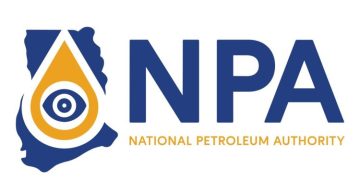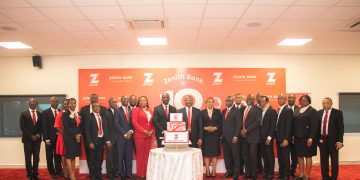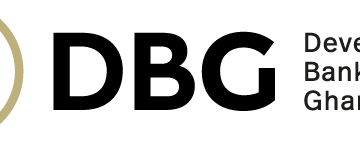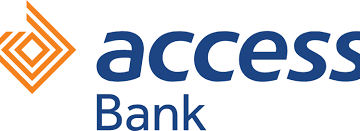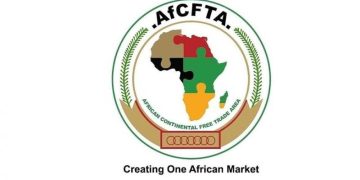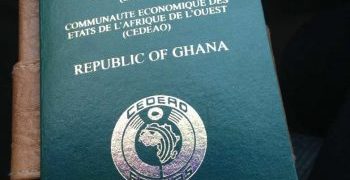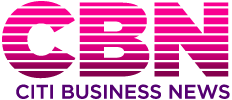Moody’s Investors Service, (“Moody’s”) has today downgraded to Baa3 (negative outlook) from Baa2 (Rating Under
Review outlook), the long-term local- and foreign-currency deposit ratings of the five largest South African banks: The Standard Bank of South Africa Limited, FirstRand Bank Limited, Absa Bank Limited, Nedbank Limited, and Investec Bank Ltd.. The rating agency has also downgraded Standard Bank Group Limited’s long-term local- and foreign-currency issuer ratings to Ba1 from Baa3, and affirmed all banks’ national scale ratings. A full list of the banks’ ratings affected by today’s rating action is at the end of this press release. This rating action concludes the review initiated on 4 April 2017, and follows the weakening of the South African government’s credit profile, as captured by Moody’s similar rating action on the sovereign rating on 9 June 2017. For further information, refer to the sovereign press release (https://www.moodys.com/research/–PR_367769). The rating action also takes into account the reduced capacity of the government to provide support to banks in case of need.
RATINGS RATIONALE
WEAKENING CREDIT AND MACRO PROFILE OF THE SOUTH AFRICAN GOVERNMENT EXERTS
PRESSURE ON BANKS
The primary driver for today’s rating downgrades is the challenging operating environment in South Africa, characterized by a pronounced economic slowdown, and weakening institutional strength that has led Moody’s to lower South Africa’s Macro Profile score to ‘Moderate-‘ from ‘Moderate’. The lower Macro Profile exerts pressure on the individual factors on banks’ scorecards, and implies that the country’s banks need stronger loss-absorption and liquidity buffers to withstand the headwinds and in order to remain at the same rating levels. The rating agency expects GDP growth of only 0.8% in 2017 and 1.5% in 2018, from 0.3% in 2016, levels significantly below the government’s target growth. These challenging economic conditions, combined with potentially weaker investor confidence, volatility in asset prices, and higher funding costs will likely pressure banks’ earnings and asset quality metrics going forward, and challenge their resilient financial performance so far.
In addition, the banks’ high sovereign exposure, mainly in the form of government debt securities held as part of their liquid assets requirement, links their credit profile to that of the government. The top five banks’ overall sovereign exposure, including loans to state-related entities, averages more than 150% of their capital bases, according to South African Reserve Bank’s (SARB) regulatory returns (BA900) as of March 2017. In view of the correlation between sovereign and bank credit risk, these banks’ standalone credit profile and ratings are constrained by the rating of the government. As a result, the baseline credit assessments (BCA) assigned to The Standard Bank of South Africa Limited, FirstRand Bank Limited, Nedbank Limited, and Investec Bank Ltd have been downgraded to baa3 from baa2, while the BCA of baa3 for Absa Bank Limited has been affirmed, already capturing the downside risks emanating from its sovereign exposure.
IMPACT OF GOVERNMENT SUPPORT ON ABSA BANK LIMITED’S DEPOSIT RATINGS
Today’s rating action also reflects the weaker capacity of the government to provide support to banks, in case of need. Specifically, Absa Bank Limited’s deposit rating previously benefitted from a one-notch government support uplift, which was removed, given the downgrade of the sovereign that indicates the government’s reduced capacity to provide support despite the bank’s systemic importance. As a result, the rating agency has aligned its government support assumptions for all five commercial banks, resulting in no rating uplift from their corresponding BCAs and positioning their deposit ratings at par with the government’s Baa3 bond rating.
NEGATIVE OUTLOOK REFLECTS SOVEREIGN OUTLOOK AND CHALLENGES AHEAD
The negative outlook assigned to all the banks’ ratings is primarily linked to the negative outlook on the sovereign rating, which is itself partly driven by the weak economic environment. The weakening credit quality of sovereign bonds weighs on the banks’ own creditworthiness given their large holdings of government securities.
Likewise, although Moody’s expects banks’ financial fundamentals to largely remain robust, the weak economic environment increases the downside risks for the banks’ asset quality and core capital levels. The relatively weak economic growth points to potentially higher impairments for the banks, especially on the retail front, exerting some pressure on their earnings and testing the resilient performance they have demonstrated in recent years. However, Moody’s does not anticipate that the asset quality deterioration will compromise materially banks’ recurring earnings, and expects banks will maintain healthy capital levels.
AFFIRMATION OF NATIONAL SCALE RATINGS
According to Moody’s, the decision to affirm the banks’ national scale ratings (NSRs) follows the recalibration of South Africa’s NSR mappings, triggered by the downgrade of South Africa’s government bond rating.
Moody’s NSRs are intended as relative measures of creditworthiness among debt issues and issuers within a country, enabling market participants to better differentiate relative risks. Although the fundamental the creditworthiness of the five largest South African banks has deteriorated, their relative credit positioning within South Africa has
not materially changed, hence the decision to affirm the NSRs outlined towards the end of this press release.
INDIVIDUAL BANKS’ MAIN RATING DRIVERS
The Standard Bank of South Africa Limited (SBSA) and Standard Bank Group Limited (SBG)
The BCA of baa3 assigned to SBSA is underpinned by its resilient earnings profile and Moody’s expectation that this trend will continue in 2017-18, following operating income growth of around 9% in 2016 and lower credit loss ratio at 0.87% in 2016 from 0.92% in 2015. The rating agency expects that the bank’s operating expenses will be contained going forward, after an increase of 12% in 2016 due to certain one-off items that caused its cost-to-income ratio to increase to 59% in 2016 from 57.6% in 2015. SBSA’s capital base remains comfortable with a reported Common Equity Tier 1 (CET1) ratio (including unappropriated Q1 2017 profits and following payment of the final 2016 dividend) of 12.7% in March 2017, while the non-performing loans as a proportion of gross loans (NPLs) improved slightly to 3.0% in 2016 from 3.1% in 2015.
SBG’s issuer rating of Ba1 (downgraded from Baa3) is positioned one notch lower than the deposit ratings of its fully owned main banking subsidiary SBSA, reflecting the structural subordination of SBG’s creditors to those of SBSA. SBG also remains well capitalized with a CET1 ratio of 13.4% as of March 2017, while its credit loss ratio was marginally higher at 1% in December 2016 reflecting the higher risk profile of its exposure to the rest of Africa.
– FirstRand Bank Limited (FRB)
FRB’s standalone credit profile is driven by the solid performance of its various operating franchises amid challenging operating conditions, resulting in an 18% year-on-year growth in its normalised earnings in the first six-months as of December 2016 (the bank’s fiscal year-end is as of 30 June 2017). The bank’s NPL ratio increased marginally to 2.36% in December 2016 from 2.31% in December 2015, but remains the lowest among its local peers. Total NPL coverage ratio is also the highest at 79% as of December 2016, and its credit loss ratio remained manageable at 0.79% despite its higher exposure towards the more risky retail segment.
Moody’s expects some elevated pressure on the bank’s NPLs in the next 12-18 months, although this is unlikely to significantly impact its overall performance in view of the bank’s stringent underwriting standards. FRB reports the strongest capitalisation among the five largest South African banks, with a CET1 ratio of 14.1% as of December
2016, about 50 basis points higher than reported in December 2015.
– Absa Bank Limited
Absa Bank Limited’s Baa3 deposit rating is in line with the bank’s baseline credit assessment (BCA) of baa3. The bank’s baa3 BCA reflects consistently solid net profitability with net income to assets ratio of around 1%. At the same time, capitalization has improved with a reported CET1 ratio at 11.6% as of December 2016 up from 10.5% as of December Absa Bank’s NPL ratio of 3% of gross loans is broadly in line with similarly-rated international peers, despite the increase in the cost of risk to 1.04% from 0.89% in 2015 predominantly due to a large single
name exposure.
– Nedbank Limited
Nedbank’s BCA of baa3 reflects its strong year-on-year profit growth of 21% in 2016, although Moody’s expects that the challenges in the economy will exert some pressure on the bank’s financial performance over the next 12-18 months due to potentially lower business activity and higher impairments. While credit costs have remained below the bank’s expectations as of December 2016, there has been a slight uptick in non-performing loans to 2.8%, from 2.5% in 2015. At the same time, Moody’s acknowledges the increase in the bank’s common equity Tier 1 ratio to 12.3% as of March 2017, from 10.5% in March 2016, and the strengthening of its liquidity metrics with a daily average liquidity coverage ratio of 101% during the first three months of 2017.
– Investec Bank Limited (IBL)
IBL’s strong asset quality, abundant liquidity and high leverage ratio drive its BCA of baa3. Although the bank’s financial performance for the year ending March 2017 was not as strong as previous years (around 7% decline in profit after tax), this was largely driven by the change in accounting treatment of investment income from fair value to equity accounting. The rating agency notes that the bank’s core income, including net interest income, net fee and commission income and trading income, was in fact higher by around 10.3% as of March 2017. In addition, Moody’s expects the bank’s asset quality to continue to be the strongest among its local peers, with reported gross NPLs to gross loans of only 1.54% in March 2017. IBL’s credit loss ratio continued to be a low 0.29%, supported by its larger exposure to non-household borrowers who have displayed better capacity to withstand high interest rates. The bank’s reported CET1 ratio was 10.8% as of March 2017, but its 7.6% leverage ratio is the highest among its local peers.
WHAT COULD MOVE THE RATINGS UP/DOWN
As indicated by the negative outlook on the sovereign rating, any deterioration in the creditworthiness of South Africa would exert downward pressure on the banks’ ratings, in view of their sizeable holdings of sovereign debt securities. In addition, the banks’ ratings could be downgraded if operating conditions worsen more than currently
anticipated, leading to significantly higher loan loss provisions that prompt deterioration in the banks’ earnings and capital metrics that exceed the rating agency’s expectations. Conversely, any upwards rating momentum of the banks’ ratings is currently limited as their BCAs are constrained by the sovereign rating.
–
Credit: CNBC Africa








